"All statesmen insist that the armaments of their own country are solely for the
purposes of defence. At the same time, all statesmen insist that the existence of
armaments in a foreign country constitutes a reason for the creation of new armaments.
Every nation is perpetually taking more and more elaborate defensive measures
against the more and more elaborate defensive measures of other nations. The
arms race would go on ad infinitum, if it did not inevitably and invariably lead to war." |
Aldous Huxley, from Ends and Means, 1937 |
"The last to bid the cry of war to cease/The first to make a malady
of peace/For what were all these country patriots born?/To hunt, and
vote, and raise the price of corn?/But corn, like every mortal thing,
must fall/Kings, conquerors, and markets most of all." |
George Byron, from The Age of Bronze,1823 |
Despite a prolific track record of award-winning films stretching back forty years, Indian director Anand Patwardhan has not, until recently, been rewarded with either the audiences or the recognition he deserves. This is not altogether surprising given Western insularity, diminished attention spans, and the difficulties documentarians face making themselves heard above the cacophonous din of mainstream entertainments. Patwardhan's collagist, essayistic films are unfashionably and passionately partisan; they focus on the complex socio-political problems bedeviling his native land; they have invariably been banned at home and are seldom screened abroad; and they tend to be long, very long by the standards of our shallow, risk-averse soundbite culture. Few TV commissioning editors have come close to emulating Patwardhan's fearlessness and determination to speak truth to power, for few share his conviction that film can change the world by moving us to tears, reflection, and, ultimately, action. Fortunately, Patwardhan's latest documentary, the magnificent Jai Bhim Comrade (2011), alerted some of our more curious and courageous film programmers to the extraordinary power of his work and they, in turn, began to spread the word to receptive audiences.
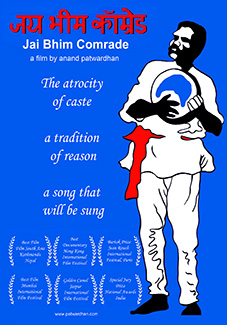
In the second half of July 2013, Tate Modern hosted, 'A Cinema of Songs and People', London's first retrospective of Patwardhan's major work, and the BFI soon followed suit with 'State of the Nation', a weekend-long Patwardhan retrospective of its own. The flier for the Tate Modern season said: " . . . the films of Anand Patwardhan represent one of the most important achievements in documentary cinema . . . an astonishing body of work whose profound commitment to radical change offers an experience like few others in contemporary cinema." The increasingly influential Sheffield Doc/Fest ranked Patwardhan alongside the likes of Chantal Akerman, John Akomfrah, Patricio Guzmán, Chris Marker, Jean Rouche, Agnès Varda and Dziga Vertov in their pantheon of inspirational figures within documentary film culture. Now, cherished distributors Second Run have made one of Patwardhan's masterworks, Jang aur Aman/War and Peace (2002), available in the UK on DVD. We already owe Second Run a huge debt of gratitude simply for bringing us Celluloid Man (2012), Shivendra Singh Dungarpur's wonderful homage to Indian cinema and the great curator P.K. Nair; it is to be hoped they consider further releases from Anand Patwardhan's brilliant œuvre. While it has been great to see Patwardhan's work presented in cinemas, it is a tragedy that so little of this most important of directors, India's preeminent documentarian, is available for home viewing. I, for one, look to him for information about, and interpretation of the complexities of politics in the Indian subcontinent.
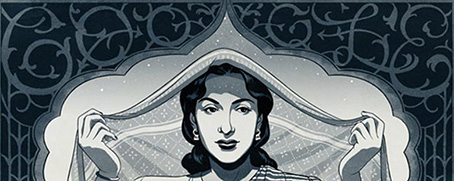
Politics and interpretation has always been central to Patwardhan's films. Waves of Revolution (1974) – shot and screened clandestinely during a period of social revolt and a nationwide strike of 17 lakh railway workers – considers the anti-corruption movement that spread across India from Bahir while Prisoners of Conscience (1978) spoke for those imprisoned and tortured during and after Indira Gandhi's infamous State of Emergency. 'Bombay Our City' (1985) contrasts the immiserated circumstances of the city's slum dwellers with the conspicuous wealth of the city's elite, 'In the Name of God' (1992) looks at Hindu fundamentalism and the historic controversy over the Babri Masjid, Father, Son and Holy War (1994) explores the link between communal violence and machismo; and A Narmada Diary (1995) explores the customs of the indigenous peoples threatened by the Sardar Sarovar dam project.
In Jai Bhim Comrade, Patwardhan considers the abiding influence of Dr. Bhimrao Ramji Ambedkar – the architect of India's constitution, the man who led half a million fellow Dalits or 'untouchables' to revolt against the caste system and convert from Hinduism to Buddhism. Fourteen years in the making and three-hours long, the film highlights the historic and ongoing oppression of the Dalits. It revolves around the desecration of Ambedkar's statue in Mubai in 1997, the subsequent massacre of Dalits, and the protest suicide of Dalit poet and activist Vilas Ghogre. In War and Peace, Patwardhan tackles even darker subject matter: the arms race, the rise of nuclear nationalism and religious fundamentalism, Indo-Pakistani relations, and the thermonuclear bombing of Hiroshima and Nagasaki.
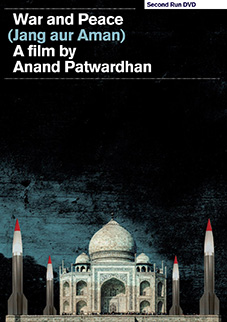
A 'mere' four years in the making and, again, three-hours long, War and Peace is as epic as its title suggests. Divided into two parts and six chapters, it ranges across countries and continents, leaps back and forth across decades, and takes us on a delightful, if often dispiriting journey to the heart of darkness while remaining inherently optimistic. The film opens in 1948, with moving archive footage of Mahatma Gandhi's funeral. This pivotal moment in India's modern history was equally important to Anand Patwardhan's family, which was active in the independence struggle. Patwardhan describes himself as "an unworthy but ardent admirer of Gandhi," his uncle Ram practiced the Gandhian principles of Satyagraha integral to civil resistance to British rule, and his uncle Achynt became a committed socialist and went underground. Both uncles withdrew from politics after partition as "the idealism of the Nehru era" abated, corruption crept in, and a new political class emerged that would eventually coalesce around the right wing BJP and the nominally social democratic Indian Congress Party. Patwardhan shows the tendency of those parties to exploit patriotism while playing pass-the-parcel with political power.
Part One of War and Peace charts India's abandonment of its egalitarian, secular, non-violent traditions in favour of what Dr. King called "the triple evils of racism, economic exploitation, and militarism." It traces the rise of nuclear nationalism from India's first nuclear test in 1974 (shockingly code-named 'Operation Smiling Buddha') through to the 'Pokhran-II' tests of 1998 and Pakistan's tit-for-tat 'Chagai' tests a fortnight later. Patwardhan links this chronology of nuclear escalation to heightened tensions caused by the Indo-Pakistani War of 1971 and the 'Line of Control' border skirmishes of the 1999 Kargil War. In Part Two, Patwardhan's focus shifts from India and Pakistan to Japan and the United States, specifically to the bombings of Hiroshima and Nagasaki and the censorship of those horrific events within the USA. The film then returns to India to address the valorization of the scientists who created the Bomb and assess the ramifications of neo-colonialism and craven capitulation to Americanization for a fragile Indian nationalism. The film closes with a short epilogue that cites Gandhi over footage of 9/11 attacks and its aftermath.
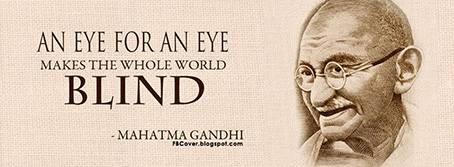
The above synopsis hints at the sweeping scope of War and Peace but doesn't begin to do justice to the patience and subtlety with which Patwardhan constructs a case for change and against the status quo. It suggests that the film follows a linear chronology whereas, actually, its success is premised on constant shifts of register and recurring temporal leaps. The film's steadily growing force is achieved by the creation of intricate argumentative arcs and loops that gradually conjoin to provoke delicate, swirling patterns of associative thought and feeling. That is why its three hours seem to pass quickly and why it is so cumulatively moving. Patwardhan has found a form – essentially the elongated essay film – that allows himself and his audiences the time to think through complex questions clearly. The immersive length of the film enables him to draw together various strands of argument about the interconnected problems of authoritarian power structures, caste and class, cultural imperialism, corruption, gender, inequality, militarization, racism, religious fundamentalism, sectarian violence and state-sponsored jingoism.
It is common practice for critics to insert health warnings into reviews of documentaries for fear of scaring the horses, as if reassurance were required that they won't overly offend the pleasure principle and unduly disturb the society of the spectacle. "Worry not," the warnings go, "this is dark but, hey, quite enjoyable too." It seems to me that such qualifying comments, which rarely accompany reviews of fiction films, patronise audiences and degrade documentary. In her iconic essay 'Visual Pleasure and Narrative Cinema', Laura Mulvey famously says: "It is said that analyzing pleasure, or beauty, destroys it. That is the intention of this article." She calls for "a total negation of the ease and plenitude of the narrative fiction film," which would generate the thrill of "transcending outworn and oppressive forms, and daring to break with normal pleasurable expectations."
To analyse Anand Patwardhan's style is to iterate the radical pleasures found in his documentaries. As the title of the Tate Modern retrospective suggests, his work is marked by juxtapositions of music and images, song and social observation, political analysis and perfectly pitched references to popular culture. As in the films of Terence Davies, humour and humanity leaven and lighten an otherwise admirably somber tone. Like Davies, Partwardhan has a profound understanding of the mnemonic power of music and how it provides both individual emotional sustenance and the binding glue of communal cohesion. There the similarities end. War and Peace and Jai Bhim Comrade might usefully be described as 'political essays set to music' and that serves as a working definition of his distinctive discursive style.
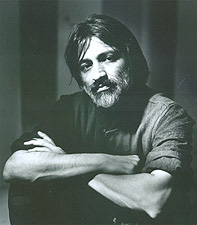
Patwardhan was politicised by the radical counter-culture while at university in the USA. It was while studying Sociology and Communications there in the late sixties and the seventies that he shot his first film footage, of anti-war student protests. He picked up a camera as a political act. Like Grierson and the directors of British Documentary Movement, whose methodology dominated Indian documentary in the years after partition, Patwardhan was primarily motivated by a sense of social purpose. Although he was drawn to film as a means of confronting injustice and contesting conventional wisdom, he reacted against the Griersonian social documentary, which was tainted by colonialism. As has been noted in critical assessments of his work, he owes a greater debt to the interventions of revolutionary Third Cinema. Patwardhan stresses that his films form themselves at the editing stage, but it is no accident that there is a clear echo of Octavio Getino and Fernando 'Pino' Solanas's imperishable classic Los Hora de los hornas/The Hour of the Furnaces (1968) in the way War and Peace is subdivided and structured, and in its use of archive footage, intertitles and popular music.
Patwardhan sold himself short when he told Georgia Korossi in a Sight & Sound interview earlier this year that he's no cine theorist. The epigram of his 1981 M.A. thesis at McGill University ('The Guerilla Film, Underground and in Exile") is taken from Getino and Solanas's influential essay 'Towards a Third Cinema: Notes and Experiences for the Development of a Cinema of Liberation in the Third World': "In the specific case of cinema—art of the masses par excellence—its transformation from mere entertainment into an active means of de-alienation becomes imperative. Its role in the battle for the complete liberation of man is of primary importance. The camera, then, becomes a gun and the cinema must be a guerilla cinema." Patwardhan has called his films an Indian 'Third Category'. He also mines Julio Garcia Espinosa's notions of an 'Imperfect Cinema' that eschews entertainment values and insists on political ones. He has described himself as a "militant practitioner of 'imperfect cinema'. When technical perfection becomes an end in itself, the end result is films that ask only that audiences passively consume and enjoy. Patwardhan's deeply moving, imperfect cinema asks audiences to actively engage, to think, to read and interpret films.
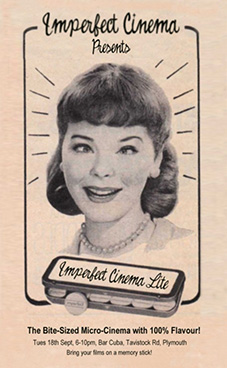
Which is not to say that Patwardhan isn't a supremely gifted director, merely to stress that his modus operandi places a greater emphasis on human intimacy and political potency than technical perfection and visual beauty. He sees himself more as an activist than an artist. His early films were shot on an old Bolex, on 8mm and 16mm stock, and he quickly learned to operate as a freewheeling one-man band. He conducts his own interviews, shoots his own footage, and edits his own films. This is one reason the gestation period of his projects is so lengthy, why his films are so long, and why his films have such a heightened sense of immediacy. He is there, on the ground, interacting intimately with the people he talks to and films.
One especially captivating scene seems worth describing in detail as it encapsulates Patwardhan's style – its democratic rigour, humour, stirring use of music, and implicit faith in people. In Chapter Two ('Enemy Country') he visits Pakistan to attend a convention organised by the Pakistan-India Peoples' Forum for Peace and Democracy (PIPFPD). At the end of Chapter 3 ('The Line of Control'), he crosses the border again, to attend a debate about the Bomb conducted by pupils of Lahore Grammar School. This appears to be a well-run school for the scions of the well-heeled. It is certainly well-stocked with Oxford dictionaries and, tellingly, whole shelves of Nancy Drew and Enid Blyton titles. The school's uplifting motto is Ilm Sai Dil-o-Dimagh Roshan ('Knowledge Enlightens Our Hearts and Minds'). In November 2011 the school won the annual All-Pakistan Under-19s Debating Championship; sadly, "by proving to the house that strong armies build strong nations." For War and Peace, Patwardhan films what one assumes is either a rehearsal for that contest or a reprise of it for his benefit and overturns that verdict.
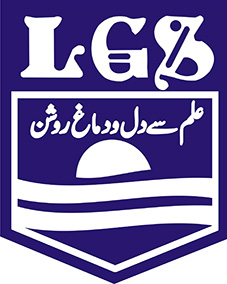
The bright buttons he encounters do themselves, their school, and their country great credit with their articulate contributions to a precocious master class in open-minded listening and intelligent argumentation. A healthy world is one in which the energy of youth combines with the wisdom of experience, and Patwardhan adds to the charm of the occasion with his own, slightly cheeky contribution. His own position in the debate is probably best expressed by one particularly sparky pupil who wears her heart on her sleeve. She says: "This is the condition of Pakistan after 50 years: we don't have the basic necessities like food, water . . . how can they even think of an atom bomb? People are killing each other. In Karachi, (pick a number, any number) 25,000 have died. We don't need outside enemies, we'll kill each other!"
After the debate is over, presumably after Patwardhan has deployed a few judicious arguments of his own off camera, a pro-peace consensus seems to have emerged. He gently chides two girls who had argued for the Bomb: "How come what you say now is so different from what you said in the debate?" One says: "We chose the stand that would give us most points . . . which would inflame passions and help us win." Her former ally in the war camp admits, "We chose the majority position." Patwardhan won't let it lie and drives his message home: "Our politicians also think like you. They, too, say things that inflame passions and help them win." To which the same girl replies: "That was wrong on my part. Politicians should not do this either . . . I ask for forgiveness." Here's hoping she grows up to become that rarest of creatures, the honest politician happy to apologise. She will have taken a useful step in that direction that day if she learned to appreciate what Alain, in Roger Martin du Gard's novel Lieutenant-Colonel de Maumort, calls the rule of rules: the art of challenging what is appealing. It is an art Anand Patwardhan mastered long ago.
As I have said above, he has also mastered the art of weaving popular and folk music into film. Part One of the film concludes with a song sung by the pupils he has filmed.* "Moon, sun and stars are there for all to share/So why fight among ourselves?/Why draw boundaries on this earth/And build up walls between two hearts?/If anyone, anywhere suffers in this world/We should feel the pain of his wounds/And our eyes should well up with his tears/Why this ever increasing distance between hearts/Life is so beautiful and so is this world/Friendship forms with difficulty/But a mere second can destroy it/Love is the cure for every pain/Love is the provider of peace in the world." The song is perfectly executed and poignantly fades to a CGI globe bristling with nuclear missiles. The innocence, optimism, and joy of that song and those young women brought tears to my eyes. It is one of the most beautiful things I have seen recorded on film.
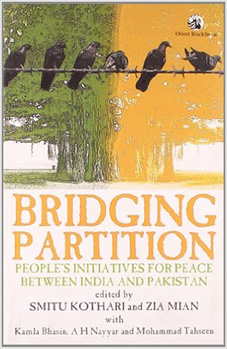
In his contribution to Bridging Partition, a collection of essays written primarily by people active in PIPFPD, Patwardhan discusses his collaboration with Pakistani Nuclear Physicist and Filmmaker Dr. Pervez Hoodhboy. The ways the two men have interacted professionally and transformed one another typifies the efficacy of people-to-people contact. When Hoodhboy was denied a visa to shoot in India while making his documentary Crossing the Lines: Kashmir, Pakistan, India (2004), Patwardhan smoothed his path. Patwardhan says of their meeting: "There are tears in our eyes – tears of relief at finding out that the monstrous 'other' is nothing but a manufactured construct, one that dissolves in the face of actual contact"
Pakistani actor-dancer-choreographer Sheema Kermani, another prominent PIPFPD activist and contributor to Bridging Partition, is equally determined to dismantle the false construct of nationalism. She refuses to be intimidated by threats of violence, despite being deemed the monstrous 'other' by Islamic fundamentalists who have banned dance in Pakistan. The Indian daily broadsheet The Hindu called her 'The Unofficial Dancer'. In 1980, Kermani founded the dance and theatre company Tehrik-e-Niswan (The Women's Movement), which has regularly performed in India to promote peace through cultural exchange. Her anti-sectarian play Jinney Lahore Nahin Vekhya (One Who Has Not Seen Lahore) tells the story of a Hindu woman who refuses to leave Pakistan during partition when her family fled to India. Her play Jang ab Nahin Ho Gi (Now There Will Be No War) is a feminist reworking of the 'no peace, no sex' theme in Aristophenes' Lysistrata.
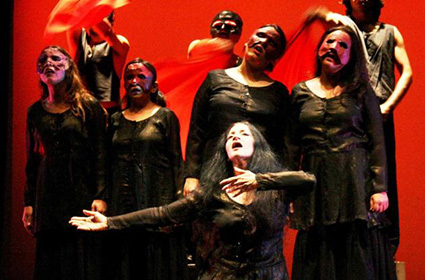
In War and Peace, Kermani performs a dance set to Gandhi's favourite hymn and considers the diminution of cultural life in Pakistan. She says: "After (the ban on dance), there was a total cultural deterioration of our society. In Karachi, there's so much violence – ethnic violence, state violence, male violence against women. We tried to analyse the causes. Maybe it's because in the last 50 years there's been a policy to keep people away from cultural expression. There is no auditorium or cultural complex, even in such a big city . . . there's a class that finds cultural activity to be bad, un-Islamic, and especially immoral for girls (like those of Lahore Grammar)."
It is not just the great and the good that Patwardhan interviews. Extraordinarily courageous, resilient, and sagacious 'ordinary' people are at the heart of all he does. The village elder in Khetolai, for example, who says of the 1974 nuclear test explosion, "They told us it was to extract kerosene," and who had sold his land to the military for 20 rupees an acre. Why? "The promised us the moon. We'd have water, this, that. They showed us a lollipop! The government is like a mother. If a mother feeds poison to her own children, what is the child to do?" Or the Pakistani worker from a cement factory who yearns for a speedy end to artificial boundaries, the lines drawn by a selfish few, by Hindu priests and Muslim priests. Or Ijaz, who invites Patwardhan into his home, sees all men as brothers, and says, "The British were evicted only when Hindus and Muslims united. Even now, this can be done."
In Chapter 3 of the film, we meet a ragged band of peace activists who will march 1500 km from Khetoli, near Pokhran in Rajasthan; to end three months later, on Hiroshima Day, 6 August 1999, at Sarnath, near Varnasi in Uttar Padesh – where the Buddha once preached. Their long march is more than a challenge of physical stamina. Even as they near Pokhran at the start of their journey, they are confronted by a bellicose mob of BJP supporters chanting: "Traitors, go back/Go back to Delhi!/No, not to Delhi, go to Pakistan!/No harm, no radiation/Nukes are the pride of the nation." Sadly, as the march began the Kargil War had broken out; as it progressed the Battle of Tiger Hill began. Patwardhan dolefully notes on his commentary: "Bodies came home in draped in the flag and grief turned to patriotic fervor. Few registered that the region had come close to a nuclear exchange. Every war is a just war and every enemy the devil incarnate . . . as the war raged, a tiny peace march continued its journey, a little lonelier than before."
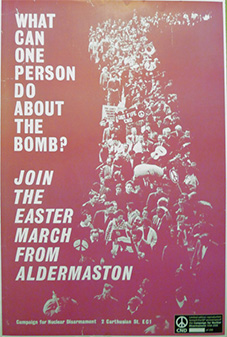
In stark contrast to those peace activists, we meet some of the shadowy figures on both sides of the border whose sophistry once stirred such violent hatreds. There is former firebrand socialist George Fernandez, of whom Patwardhan wearily says: "Now a Defence Minister in alliance with Hindu nationalists, George speaks less of poverty and more of patriotism. There is the BJP's A.B. 'Atom Bomb' Vajpayee, of course, and his former henchman, the slimy Pramod Mahajan. There's Pakistan's General Musharraf, saying, after he had deposed Nawaz Sharif: "This is not Marshall Law, only another path towards democracy." Perhaps most chilling of all, though, is the odious Sadhui Rithambara, a wild-eyed spokesperson for the right-wing Hindu organization, the VHP. At a World Hindu Organisation rally, she tells the gathered faithful: "We aren't afraid of atomic bombs. If war begins, no trace will remain. Kashmir will still be there, but there will be no Pakistan . . . Changing its course, the Ganges will flow through Lahore (drowning the pupils of the Grammar School!). The flag of India will be driven into the chest of Islamabad. Rawalpindi and Karachi will be fully destroyed (along with Sheema Kermali and her dancers!)."
As Part Two begins, we watch archive footage of the unspeakable horrors of Hiroshima and meet another doughty peace activist, Taketa San, one of the Hibakusha who "remain the conscience of the Nuclear age," as he visits India and Pakistan after the nuclear tests of 1998. In a strained voice, chocking back tears of sorrow, he recalls what befell his sister on 6 August 1945. He says: "Her head was injured, her back was burnt. We managed to bring her home. Mother couldn't speak except to repeat 'Thank God you're home'. A relative found some rare sesame oil. We felt hope and thought we could apply the oil, but her clothes had melted onto her skin and wouldn't come off. We cut them off, telling her to be brave, but next morning she lost consciousness."
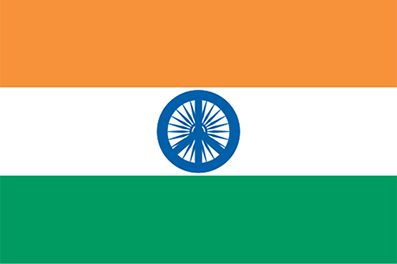
While filming at the Hiroshima Peace Memorial Museum, Patwardhan meets Masanobu Fuji, who lost his parents on that infamous day and who gives Patwardhan a copy of a book, The Pigeon's Grandfather, which he'd written to remind future generations that birds and animals also died in the bombing. He, too, is overcome by grief as he directs Patwardhan to an old map of Hiroshima and points to the spot where his family's home and corner shop once stood. Is he angry at those responsible, Patwardhan wonders? "The Buddha says that hatred can't be overcome by hatred. This was something we humans did, so instead of blaming others, I tried to say in the book that we should be responsible for other living beings."
And yet others were to blame, men in suits in faraway Washington D.C., for instance. Patwardhan travels back to the USA to remind us that xenophobic nationalism and religious fundamentalism are as rife there as they are India. He begins by playing a tape recording he had received from the American Air Force Association in response to his request for an interview: "Hi. This is Steve Aubin from the Air Force Association for Anand Patwardhan. Er, from our standpoint, it doesn't make any sense for us to sit down with you on camera on the Enola Gay issue and we prefer to have you talk to the historians." Patwardhan does just that.
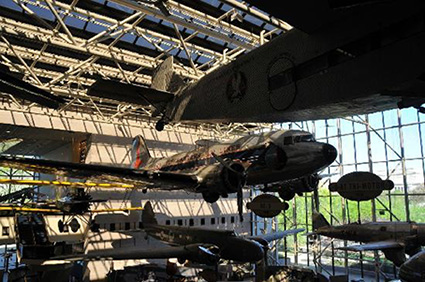
At the Smithsonian National Air and Space Museum he meets Martin Harwitt, a former director of the institution, who explains that, in 1995, the museum had attempted to display the Enola Gay in the context of 20th Century history in 1995. They, too, had spoken to the Air Force Association. They, too, had received a shockingly revealing response. Harwitt says: "The Cold War was coming to a close, defence budgets were falling, and the Air Force Association was worried that if we showed the harm done to civilians on the ground people might turn against atomic weaponry and, therefore, against the industry that produces those weapons and the means to drop them." Indeed, they may well have.
Historian Kai Bird also recalls the 'controversy' surrounding the Smithsonian's proposed exhibition on the bombing of Hiroshima and Nagasaki. Bird regards it as understandable, given the gradual release of information from the archives, that most Americans still believe the bombing was justifiable. He makes it plain, though, that the Japanese knew full well they were defeated and were on the verge of surrendering, and that, after the Americans had broken the Japanese code, President Truman was able to read his enemy's secret communications and gauge their intentions. "In the planned exhibit for the Enola Gay at the Smithsonian there were going to be full-scale reproductions of those cables . . . They, too, were censored. In the final exhibit, there were no pictures of the victims . . . Congressmen and Senators threatened to cut off funding to the Smithsonian, attacking the patriotism of the historians involved in the exhibit and the tenor of the entire debate because very reminiscent of McCarthyism . . . it was framed as an anti-American exhibit."
After that salutary visit to the land of the free, we return to India. In Chapter 5 ('The Victory of Science'), Patwardhan speaks to some of those who have suffered the effects of toxic nuclear nationalism and who speak of neighbours dropping like flies. At a Dept. of Atomic Energy nursing home, we meet Dr. Arjun Soren, one of only two doctors the village of Jadugoda produced. He once lived and worked near a Uranium mine, is fighting for his life, and subsequently dies of Acute Myloid Leukemia or blood cancer. We meet a couple from the same village and their son (who can neither eat, sit up or walk). We meet a loving father from Mechua and his son (who is severely disabled and has only one eye). And we meet Dr. P.K. Iyengar, former Chief of Bhadu Atomic Research Centre, who sees China as India's next enemy and wants to extend the range of nuclear missiles accordingly. This Indian Dr. Strangelove says: "Touchwood, we haven't had a single case in which a single person has lost his life due to radiation . . . you have to do a cost-benefit analysis. There is a risk involved but that risk is ok as long as it's minimal."
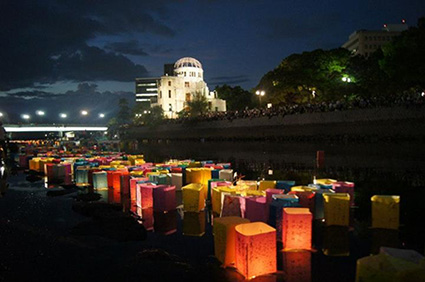
As the film winds down, Chapter 6 ('Song of America. Song of India') considers India's reprehensible withdrawal from the Comprehensive Test Ban Treaty in 1996 and the 'Armsgate' scandal unleashed by 'Operation West End' - the Tehalka sting operation that revealed titanic, if precedented levels of bribery and corruption within the Indian Establishment. It takes us to a Defence Expo in New Delhi and an Indo-American Society event sponsored by Colgate and Monsanto. By this stage of the film, nothing can surprise us, but it continues to sadden and, hopefully, enrage us. Patwardhan's painstaking, patient approach to the gathering of his material; his softly-spoken, restrained commentary; his indefatigable battles against apathy, censorship and conformity; and his human capacity not just for conversation with people of all ages, classes and cultures but for laughter and love of life – all combine to create one of the great anti-war films of recent times and one of contemporary cinema's most significant achievements.
At this morning's ceremony to mark the 70th anniversary of the first nuclear attack in human history, Japan's Prime Minister, Shinzo Abo, reiterated his country's commitment to nuclear disarmament. The Mayor of Hiroshima, Kazumi Matsui, said: "Our world still bristles with more than 15,000 nuclear weapons, and policymakers in the nuclear-armed states remain trapped in provincial thinking, repeating by word and deed their nuclear intimidation . . . To coexist we must abolish the absolute evil and ultimate inhumanity that are nuclear weapons. Now is the time to start taking action." The delicate coloured lanterns that glided down the river Motoyasu at dusk today, and which bob on the water at the close of War and Peace, commemorate the many tens of thousands killed by the atom bomb the Americans dropped. We can best honour their memory by redoubling our efforts for peace, not least for the sake of the young women of Lahore Grammar School.
Framed 4:3 and shot on what was very likely a variety of semi-pro digital camcorders, the image quality is solid enough for an SD transfer, with a decent level of sharpness, good colour rendition and nicely pitched contrast. The image integrity drops a little when the light levels fall, but this is par for the course on non-HD digital video. As you would expect, the image is spotless, and the archive footage is in generally good shape.
The Dolby 2.0 stereo soundtrack is very clear and cleanly mixed, aided by some good quality location and interview sound recording.
Optional English subtitles are available, but be aware that, like those on Second Run's DVD of Celluloid Man, if selected they accompany every scene, even those in which the language being spoken is English. Live with it. What is being said is too important to carp.
Interview with director Anand Patwardhan (17:59)
Anand Patwardhan explains in most eloquent English how and why he began shooting the film, how this led to him being invited to Hiroshima and Nagasaki, and the circumstances that enabled him to shoot footage in Pakistan. He reveals that he only makes films when he becomes upset about something, and goes into some detail about the battle he had with the Indian censors – one that eventually ended up in the High Court in a case that he resoundingly won – to get his film released without cuts. An enthralling and informative interview.
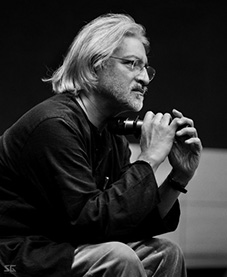
TV Debate in Pakistan (20:48)
In May of 2005 on the seventh anniversary of the first nuclear tests in the Indian sub-continent, Pakistan's Aaj TV screened War and Peace in four parts, each of which was followed by a panel discussion, extracts of which have been compiled here. Hosted by Syed Talat Hussain, the panel consists of director Anand Patwardhan, Dr. Pervez Hoodbhoy, Professor of Nuclear Physics at Quaid-i-Azam University, and former Director General of Military Intelligence, Lt. Gen (Retired) Asad Durrani. Contributing a video message is Dr. Shireen M. Mazan, Director General at the Institute of Strategic Studies, who kicks off by saying that she is in favour of Pakistan's nuclear tests and is clearly not happy about Patwardhan's film. Once again, Patwardhan makes a persuasive case against nuclear weapons on both moral and practical grounds, and rightly points out that they did nothing to end wars and that the world's nuclear powers now fight each other by proxy using conventional weapons. He's backed all the way by Hoodbhoy, though as you might expect, Durrani is more conservative in his viewpoint, agreeing that nuclear weapons are immoral but claiming that they are still something the country needs. In a particularly pertinent comment, Patwardhan reminds us that in order to massacre millions of people on the other side you first have to demonise them, a message as sadly relevant as it ever was.
Deleted Scenes:
The 'peaceful' atom (4:17)
At an exhibition held at the Bhabha Atomic Research Centre to mark 'Technology Day' – held annually to celebrate the anniversary of India's first nuclear tests – staff show mutated seeds to the public and assure them that there is no danger from radiation, although one of them does let slip that the process of doing so has resulted in accidents in the past.
Were nukes necessary to end WWII? (0:53)
Historian Gar Alperowitcz reveals that discussions were taking place even before the first atomic bomb was dropped about how it could be used to put pressure on the Soviet Union.
Waiting for Clinton (1:21)
Crowds gather in the street for a visit by Bill Clinton, whose motorcade slips by so quickly that some of the assemebled aren't even aware that it happened.
Nukes and Cars (1:54)
Defence Advisor K. Subhramanyam tries unsuccessfully to draw a parallel between a country's desire to have a nuclear capability to its choice to produce automobiles. He lost me at the start.
Also included is a Booklet, which features an interview with filmmaker, curator and author Mark Cousins, who ansers questions on Anand Patwardhan, about whose work he is passionate, and a fascinating essay on the director by author and professor Akerel Bigrami.
Let's keep this simple. War and Peace is an essential documentary work from a richly talented and politically committed filmmaker, and deserves to be as widely seen as possible. It's well served by Second Run's solidly featured DVD and comes highly recommended.
* The pupils of Lahore Grammar School sing: https://www.youtube.com/watch?v=J4VpDLY0hhU
|